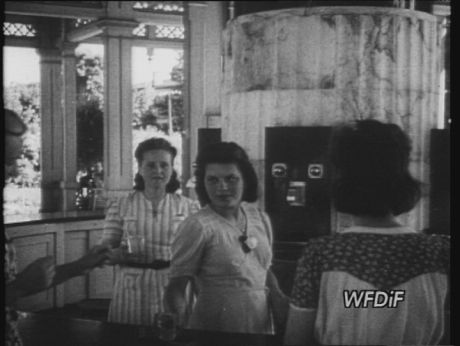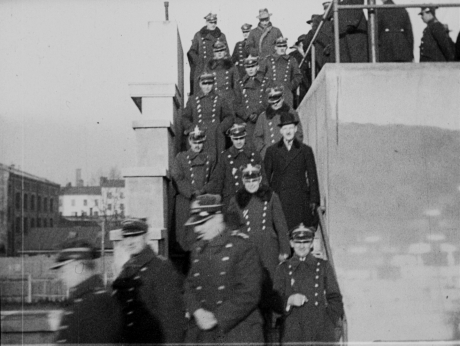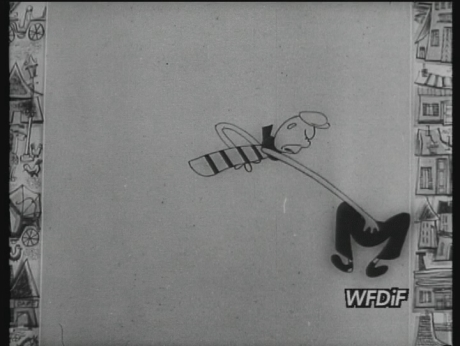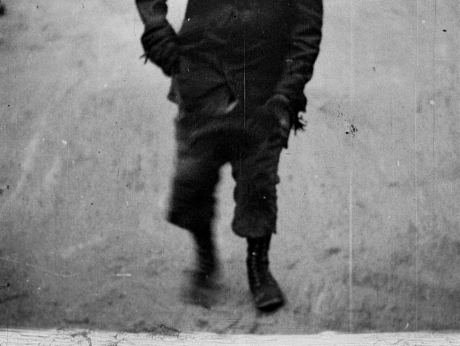
 overview
overview
Warsaw, 1930s. The life of Jewish lower class in tenement flats, musty cellars and the work of the people occupying those areas are a day to day observed by Jewish children. The health of Jewish workers is really bad. Tuberculosis, also known as the disease of the poor, is affecting a lot of children. Some people go to the Jewish Medem Sanatorium in Miedzeszyn near Warsaw. In the Sanatorium they receive food, clean clothing and they learn how to live in the commune which follows modern rules set by the staff. Every day they help to farm near the facilities that allows their self sufficiency. Pupils attend sport exercises, educational classes and art lessons. In the medical facility there are also children of striking Polish coal miners from Zagłębie.

 CONTENT
CONTENT
The life of Jewish lower class in 1930s Warsaw. Neglected tenement flats on Franciszkańska Street, dormitory musty cellar flats, the work of the tenants – this is the day to day observed by Jewish children. One of those kids is Lejzor who sells “obwarzanki” (type of a Polish bagel) on the streets. He suffers from the first symptoms of tuberculosis. Therefore, he ends up at the Meden Sanatorium in Miedzeszyn. He is welcomed warmly alongside a group of other children. The first supper reveals boys’ bad habits. He has been caught on the theft of pastries from a table by his teacher. Instead of a punishment, the boy is being shown and taught how to behave. Little Moritz also struggles in finding himself in the new environment. Everything is new and out of the ordinary for him. He avoids bathing and he does not want to take off his traditional Jewish outfit – a gaberdine and a hat, that he even tries to sleep in. Only due to other children’s intervention, he finally washes himself and puts on a night gown. After another day of games, expeditions, physical activity and fun, makes the boy take off his Jewish outfit and assimilate with the group. Yet not everyone obeys. Lejzor poured water on Zalaman during morning preparations. This causes the boys to throw tooth powder at each other. Children’s commission informed about this incident decides to punish the boys by making them clean the bathroom. Throughout the following days, pupils work in the library, play games, help in the farm near the facilities – plough flowerbeds, pick vegetables, eggs and honey, and take care of animals. The excitement is triggered by the artist evening, where kids are meant to perform singing or reading poetry. Soon the committee finds out about the poor conditions of the life of children of striking coal miners from Zagłębie. During the children committee meeting, one boy suggests that each pupil gives away one of their food portions. As a result, the Sanatorium could host a few of those coal miners’ children. The idea has been applauded by those who came to the meeting. Teacher informs the rest of pupils about hosting a few of the polish children and that the rest of them will receive special greetings. The Polish children soon arrive on the properties. They are warmly welcomed at a special assembly. The stay in Sanatorium is coming to an end. For this occasion, the teachers and pupils have been shown a play about puppets releasing themselves from their strings. Children return to their homes.

 comment
comment



















Soon after returning to Poland, Ford began the production for the film about Jewish peasants threatened by tuberculosis. The film was shot on the premises of Medem Sanatorium in Miedzeszyn. The script was written by Wanda Wasilewska, who points out modern methods carried out by staff at the Sanatorium, that was constantly on the firing line of Jewish orthodox. The film “Children Must Laugh” (“Mir Kumen On”) was […] something more than just a commercial praising the modern medical facilities. Its ideological sense was based on shouting out slogans of class solidarity and national tolerance. Jewish children who find themselves in the Sanatorium heaven, give away their places to children of striking coal miners from Zagłębie. This was the reason why censors wanted to ban the film and turn it into une cause célèbre in the fight for freedom of speech and thought. Film censors asked the producer (which was the Medem Sanatorium itself) to make a few changes to the print of “Mir Kumen On”. There were a lot of them and every one was to calm the social message. Film Censorship Board didn’t want to allow to screen poverty in cities, children working on streets of Warsaw, four scenes of striking miners from Zagłębie and finally the scene with the young pupil performance about rebelling puppets who want to set free. They cut their strings and dance by themselves. These were significant changes to the cut of the film, reducing its duration to 2/3 of the original. Proposed was also the deletion of a speech by one of the managers of the facilities about a need to fight for an order in society, so every child in need finds a space in Sanatorium. Film Censorship also didn’t like that the children were reciting “Greetings to the world” by Walt Whitman. The Sanatorium’s head office refused to make the changes proposed. The fight for “Mir Kumen On” to be allowed on screens has flared up.
On the front line were the whole of progressive press, from half legal communistic press to liberal “Wiadomości Literackie”. Film Censorship explained their decision in the following words: “The film “Mir Kumen On” under the cover of humanitarianism and modern teaching methods, contains scenes that are taking an advantage of mass poverty and the propaganda of the communistic worldview. Therefore, the screenings of the film could bring the dangers to [sic]”. Protests and calls didn’t help. Men from the Film Censorship Board preferred Adolf Nowaczyński’s stance: “There should be no tolerance for any form, even undercover, of Bolshevism. Censorship has to exist and be alert. Even more alert. And if the necessity demands, then ban, or even delete, whatever cut can fit.”.
“Mir Kumen On” ended up being abandoned in Poland. One print managed to be smuggled to France. Ford’s film was presented at many Jean Painlevé screenings. It has been titled “Here we come” (“Nous Arrivons”) The French audience and critics have welcomed the Polish documentary with highest regards.
Jerzy Toeplitz, „Historia sztuki filmowej”, t. IV, Warszawa 1969, s. 406-408.
After his return from Palestine, Aleksander Ford received a request to shoot a documentary about the Vladislav Medem Sanatorium for lower class Jewish children who are in danger of having Tuberculosis (during the shoot, one of the pupils there was Maker Edelman). The film’s realisation came from the Bund party initiative and Szloma Gliński from the management of the Sanatorium. The film was meant to portray the life, teaching methods and the recovery in the Jewish socialist Sanatorium in Miedzeszyn, a small town near Warsaw. Due to its radical messages, it was considered by the Film Censorship as dangerous, therefore it was banned to be screened. Main protagonists of “Mir Kumen On” are three children living in inhumane conditions that have been given a life changing chance. In the Sanatorium, children firstly show their struggle with adjusting to the new conditions. Step by step they begin to be happier. They play instruments, sing socialist songs, play games, feel as a part of the society and of the world surrounding them. Finally, after three months of stay they have to come home.
The script was written by a communist writer and journalist Wanda Wasilewska, Bund party member, Jakub Pat, in cooperation with Sanatorium alumni. The film director helped in collecting documentation. The director of photography was Stanisław Lipiński, who later on during the war and after was making films in Palestine together with Józef Lejtes. Music was written by Hanoch Kon. The film wasn’t played by professional actors and however it was a canvassing film with an intention to get to Jewish societies and convince them to be more giving, then it is possible to notice a prelude to later Italian neorealism. […]
“Mir Kumen On” didn’t have then an official premiere in Poland. It was although shown abroad. The owners of Sanatorium, knowing the potential dangers, smuggled a print to France.
The first screening of the film titled “Nous Arrivons” was in March 1936 in Paris, in representable Salle Pleyel. The projection was introduced by Jean Painlevé and Luis Buñuel himself. The French audience and press welcomed with appreciation. There were a few prints made in the world, but even those, and especially those, that ended up in the USA – were partially censored, this time by a censor – Jew not assigned to do so. In 1944, Stefan Osiecki in Concanen Studio in Great Britain have worked on a shortened 870 meters long version of Ford’s film titled “Children Must Laugh”. In the end of the film was a text informing that all characters in the film, including pupils and staff have been killed by the Germans in 1942.
Natan Gross, „Film żydowski w Polsce”, Kraków 2002.